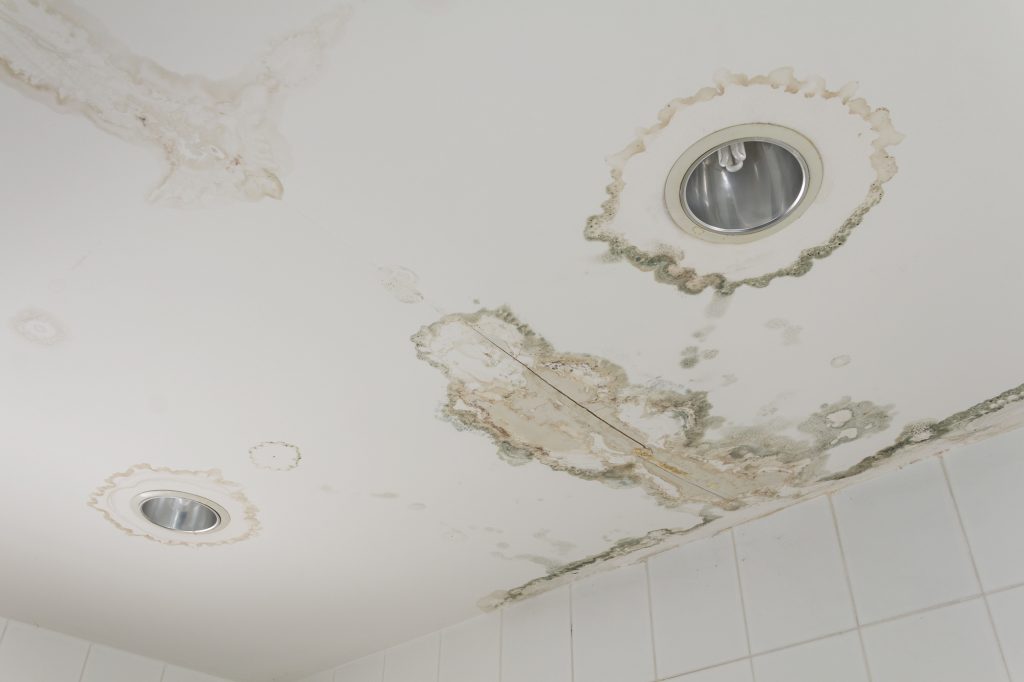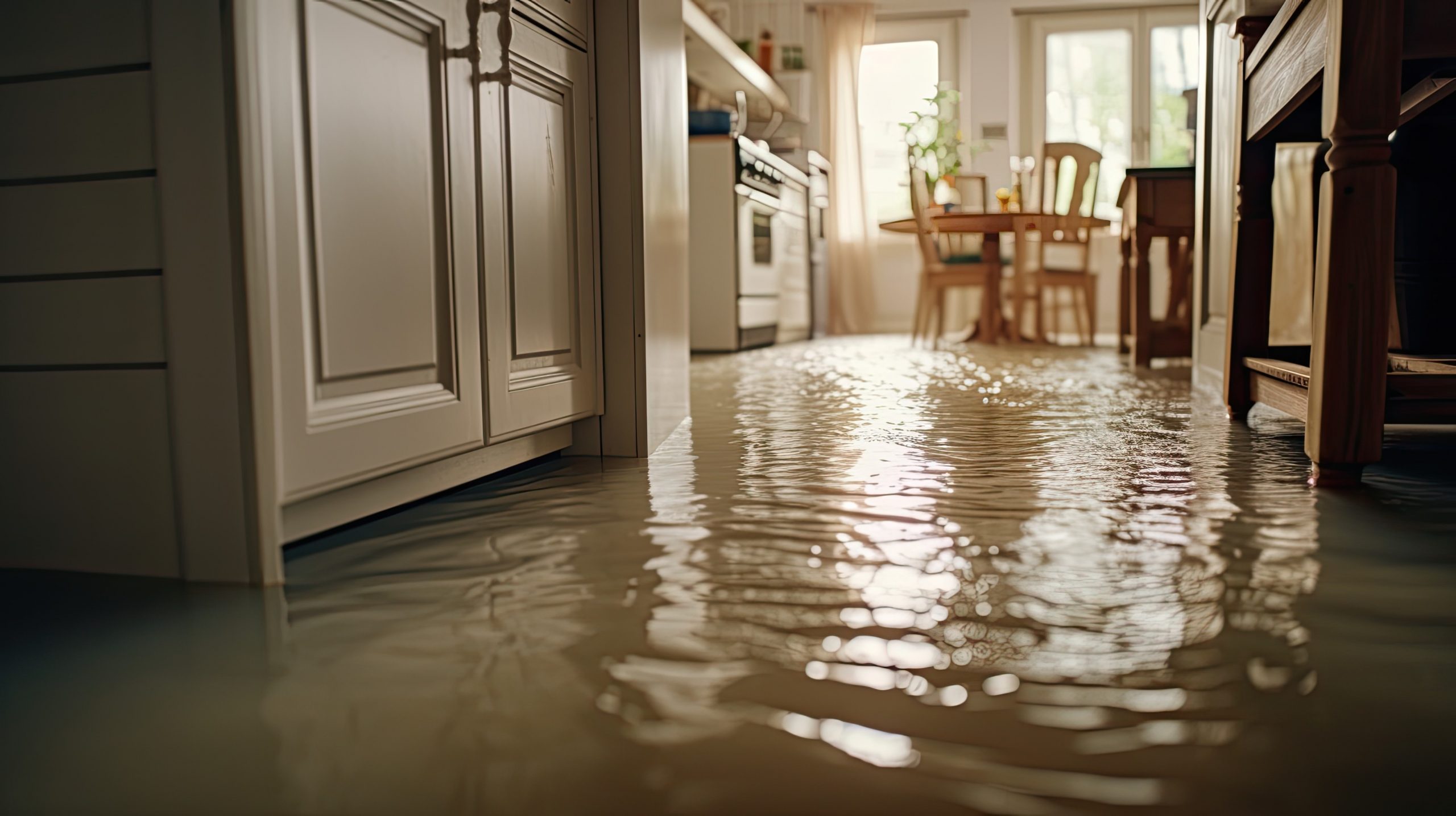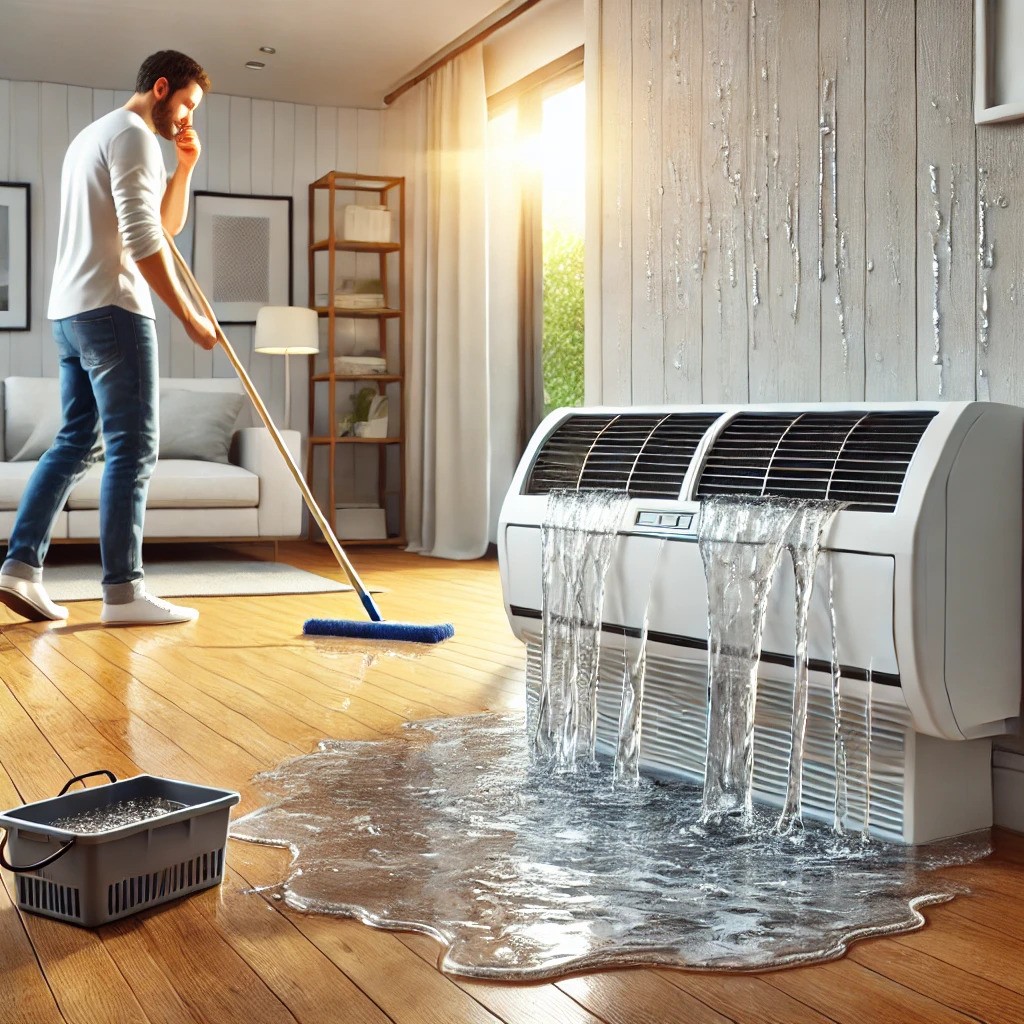Table of Contents
Ceiling water damage can be a homeowner’s worst nightmare. Not only does it compromise the structural integrity of your home, but it can also lead to mold growth and other health hazards if left untreated. Identifying the signs of ceiling water damage early on is crucial for preventing further deterioration and costly repairs. In this comprehensive guide, we’ll explore the various indicators of ceiling water damage that every homeowner should be aware of.

Signs of Ceiling Water Damage
1. Stains and Discoloration:
One of the most obvious signs of ceiling water damage is stains or discoloration on the ceiling. These stains may appear as dark patches or water rings, indicating that water has infiltrated the ceiling material. Stains can vary in size and shape, depending on the extent of the damage and the source of the water leak. It’s essential to address these stains promptly to prevent further deterioration of the ceiling and potential mold growth.
2. Sagging or Bulging:
Ceiling materials such as drywall or plaster may begin to sag or bulge when they become saturated with water. This is a clear indication of water damage and should be addressed immediately. Sagging ceilings not only look unsightly but also pose a safety risk, as they may collapse if the damage is severe enough. If you notice any sagging or bulging in your ceiling, it’s crucial to have it inspected by a professional to determine the extent of the damage and take appropriate action.
3. Peeling Paint or Wallpaper:
Water infiltration can cause paint or wallpaper to peel away from the ceiling surface. This occurs when moisture becomes trapped between the ceiling material and the paint or wallpaper, causing it to lose adhesion. Peeling paint or wallpaper is not only an aesthetic issue but also a sign of underlying water damage that needs to be addressed. Ignoring this warning sign can lead to further deterioration of the ceiling and exacerbate the problem.
4. Musty Odors:
Persistent musty odors in your home can indicate the presence of mold or mildew, which thrive in moist environments. If you notice a musty smell coming from your ceiling, it’s likely that water damage is present and mold may be growing within the ceiling material. Mold can pose serious health risks to you and your family, so it’s essential to address the source of the moisture and remediate any mold growth promptly. Hiring a professional mold remediation specialist is often necessary to ensure thorough removal and prevent recurrence.
5. Dripping or Leaking Water:
The most obvious sign of ceiling water damage is the presence of dripping or leaking water from the ceiling. This may occur during or after heavy rainfall, indicating a leaky roof or plumbing issue. If you notice water dripping from your ceiling, it’s crucial to locate the source of the leak and address it immediately to prevent further damage. Ignoring a leaking ceiling can lead to extensive water damage, structural issues, and costly repairs down the line.
6. Warped or Damaged Ceiling Materials:
Water damage can cause ceiling materials such as drywall, plaster, or ceiling tiles to warp, buckle, or become otherwise damaged. This may manifest as uneven or warped ceiling surfaces, cracks, or crumbling plaster. Warped ceiling materials not only compromise the aesthetic appeal of your home but also indicate significant water damage that requires attention. Repairing or replacing damaged ceiling materials is essential for restoring the structural integrity of your home and preventing further deterioration.
Ceiling water damage is a serious issue that can compromise the integrity of your home and pose health risks to you and your family. By being vigilant and proactive in identifying the signs of ceiling water damage, you can address the problem early on and prevent further damage and costly repairs. If you notice any of the signs mentioned above, it’s essential to act quickly and enlist the help of a professional to assess the extent of the damage and implement effective solutions. Remember, addressing ceiling water damage promptly can save you time, money, and headaches in the long run.
For Professional Ceiling Water Damage Repair in Coral Gables, Miami, Pinecrest, Key Biscayne and other parts of South Florida, call PuroClean of Coral Gables on +1 305 894-4343.
Ceiling Water Damage Repair in Coral Gables & Miami – Call (305) 894-4343
Water damage from storms, floods, or plumbing failures can lead to costly repairs and mold growth if not addressed quickly. Our water damage specialists will:



Water damage won’t wait—neither should you! Call (305) 894-4343 now for immediate water damage restoration in Coral Gables & Miami.

Can water damaged ceiling be fixed?
Yes, water damaged ceilings can typically be fixed. The extent of the ceiling water damage will determine the necessary repairs, which may include drying out the affected area, replacing damaged materials such as drywall or plaster, addressing the source of the water leak, and repainting or refinishing the ceiling surface. It’s essential to address water damage promptly to prevent further deterioration and mold growth. Consulting with us is recommended for proper assessment and repair.
Does a ceiling need to be replaced if it gets wet?
Whether a ceiling needs to be replaced after getting wet depends on the extent of the ceiling water damage. In some cases, drying out the affected area and addressing the source of the moisture may be sufficient. However, if the damage is extensive, such as sagging, bulging, or mold growth, replacement may be necessary to ensure structural integrity and prevent health hazards. Consulting with us is advisable to determine the best course of action.


 PuroClean of Coral Gables
PuroClean of Coral Gables